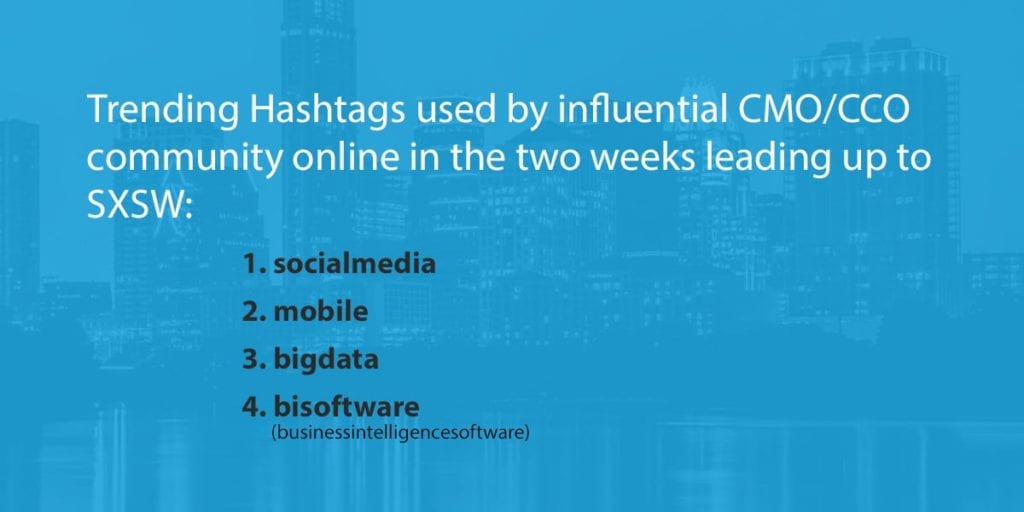
Each year, more than 25,000 interactive experts visit Austin to hear about what’s next and reflect on what it means for their organizations. It’s very easy to get caught up in the buzz. Very hard to sort through it all and figure out what really matters. Basically, what is the trend underlying an innovation or what is the truth that we should live by as we lead our communications teams? Here are four key trends related to innovation and four pearls of wisdom from leading professionals that emerged at SXSW. Each is focused on how it will influence our work.
1. The importance of Meerkat. On its face, it’s simply an app that allows you to share video via Twitter. In reality, visual content is our favorite way to learn and it is driving many innovative models.
The Fortune 500 is doing a poor job of leading with video first, however. In fact, often it is just an add-on to our work. Big mistake.
We prefer to learn visually, technology is making it easier to do so and the marketplace is creating more visual solutions. Are we evolving our own use of video inside our companies?
2. Speed kills old models. We groan as we wait six to nine months for a campaign to be created, approved and released. The good news is that technology enables speed and when speed gains enough momentum, it destroys old models. We’re moving into the era of the agile campaign, where hours matter, not months. You can see it in how companies share news at SXSW. More important, communicators can develop libraries of content in advance of trends and then react within minutes when necessary. Speed + Right Content + Right Window = Results.
3. Data scientists are the new media planners. Customer behavior (earned and shared media) will influence greatly how we plan for paid media. We should always know what our customers actually do online before we develop a paid media plan. Earned media makes paid media smart.
For communicators, this is a gift from heaven. Will we be ready to take advantage of how analytics is reshaping the market? Do our communications teams have geeks on staff? We should.

4. Responsive experience trumps responsive design. We used to focus on ensuring the same website experience was shown in the same way via any device. This responsive design approach now is table stakes.
For our owned media, we need to ensure the right experience, not the same experience, is shown each time. With more than 50 percent of content consumed by mobile phone, we only get one chance to get it right. It’s critical for communicators to understand search habits, who visits their site and what that experience should be. We can’t just count site visits.
And here are some tips from senior executives patched into business communications:
1. Change is normal. “One thing I’ve learned about being a communications professional—especially in digital—is to be open and flexible to change. As you know, the digital landscape changes approximately every 6 months. You have to think about how you’re going to reach your customers on the platforms they use, it’s not the other way around.”
— Paul Buckman, Director, Online Communications, US Food and Drug Administration
2. Say hello to real KPIs. “It’s very easy to say that communicators need to be data-driven, but the real trend needs to be communicators focusing less on rear-view mirror measurement and more on what helps to inform the road ahead.
It’s great that the goals for a particular campaign were met, but how does that information help us plan the next campaign?
How does it help us hone the list of people we plan to engage with for the next quarter? How does it help us use the right sort of keywords in our copy? How does it help us achieve greater brand lift for the upcoming quarter? Rear-view mirror measurement doesn’t always help answer those questions, and the industry is still doing far too much of that sort of work.”
— Chuck Hemann, Manager, Analytics, Intel Corp.
3. New school ROI. “Too often we are caught up in vanity metrics like the number of views or clicks and likes and less interested in or able to explain the true business value related to our effort.
Did we create a piece of content that can be leveraged by marketing, sales or recruiting? Are we moving the needle on corporate reputation or adding value to the brand?
Whether it is positioning the company, selling product or recruiting new talent, communications professionals need to explain more succinctly what we are doing, why we are doing it and the value it brings.
Doing so allows us to tangibly show that our communications outcomes are creating true business results.”
— Michael Marinello, Head of Global Comm., Technology, Innovation & Sustainability, Bloomberg
4. Avoid content pollution. “We are on the cusp of a new horizon for communications professionals but are dangerously close to messing it up as a profession. The modern communicator needs to meld great content with the science of content distribution and the insights of big data.
We can no longer shout messages and hope they stick. Instead we need to be data modelers, big data and insight experts, digital channel pros and world-class storytellers who create content that cuts through the clutter, minimizes content pollution and is measureable by its impact.”
— Andrew Bowins, Senior VP, Corporate Reputation and Engagement, MasterCard
As we sort through the innovation as well as some hype, the message is pretty clear. We have the best opportunity in our lifetimes to evolve the communications profession. We also have the most urgency to do this now with intent, purpose and skill.
CONTACT:
Bob Pearson is President of W20 Group and author of “Pre-Commerce: How Companies and Customers are Transforming Business Together” (John Wiley and Sons). He can be reached at [email protected]
This article originally appeared in the March 16, 2015 issue of PR News. Read more subscriber-only content by becoming a PR News subscriber today.
